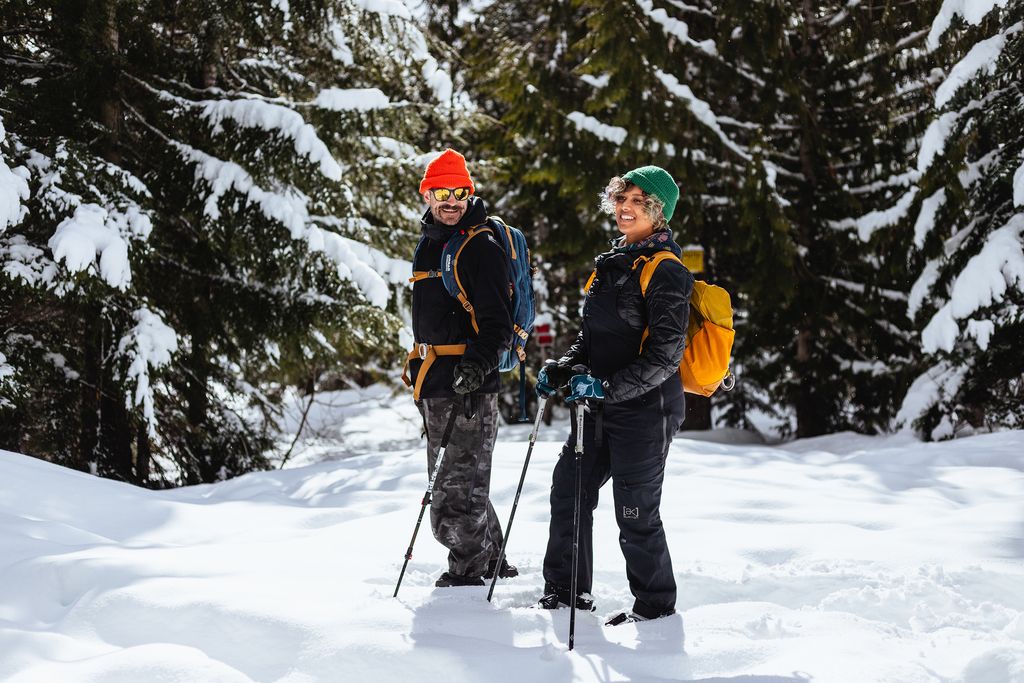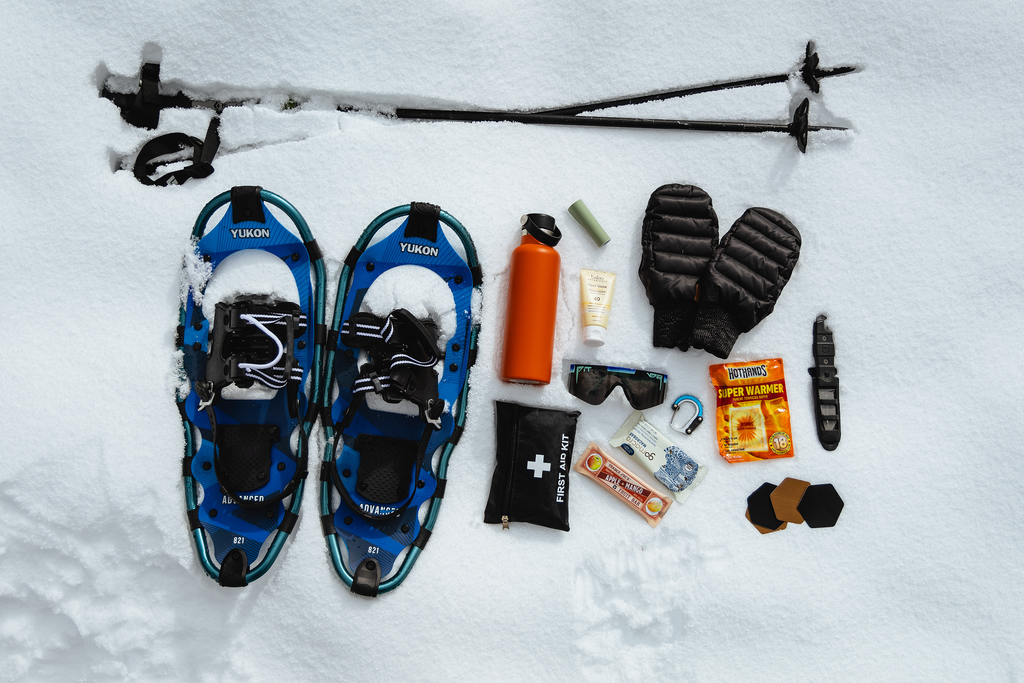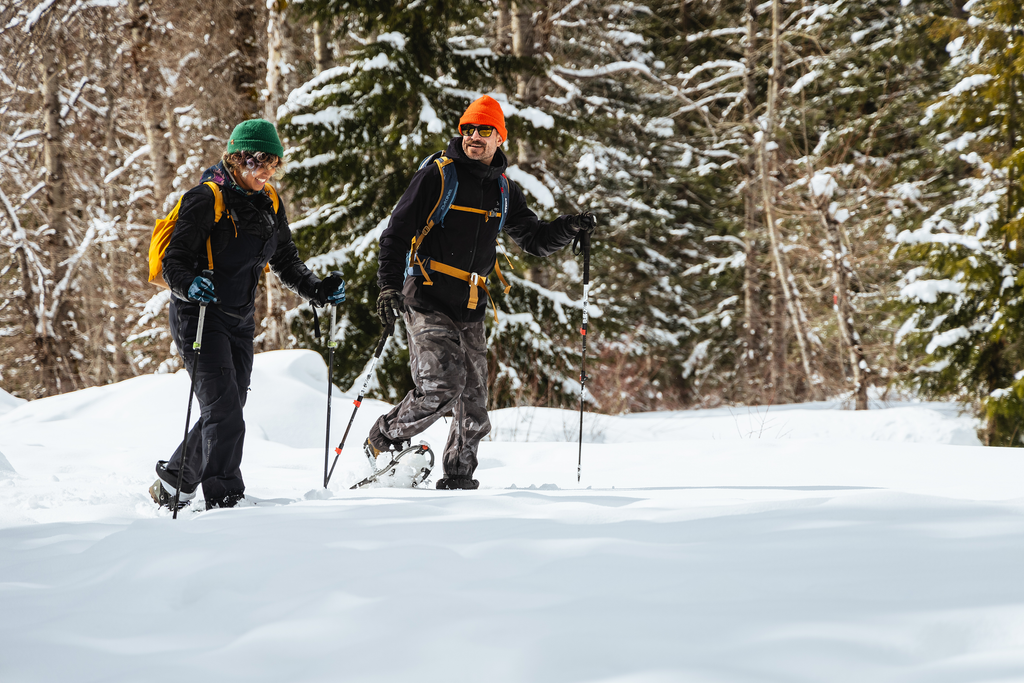Gear Care & Repair
Gear Up for Snowshoeing: Essential Winter Hiking Kit

Winter brings a special beauty to the outdoors. Everything looks different when it's covered in snow, from the trees dressed in white to the quiet, frozen lakes. Imagine walking down your favorite hiking trail, the crunch of snow under your feet. It can feel a bit like floating - snowshoes distribute your weight over a larger area to prevent sinking into the snow. Think of it as hiking's winter counterpart.
This way of getting out into nature isn’t just fun; it’s great for your health too. Hiking in the snow is a good workout, helping to build your muscles and improve your health. Being outside is great for your mind, and can make you feel happier and more relaxed.
But to enjoy this winter activity, you need to be prepared. Knowing how to plan and pack for snowshoeing means you can handle the cold and any surprises that come your way, and will make your trip safer and more enjoyable. You won't have to worry as much about what might go wrong because you'll have the tools and knowledge to deal with different situations if they arise. We recommend having a kit tailored for winter outings – it will help make sure you can stay warm, dry, and safe. We’ve even included a comprehensive snowshoeing checklist and the end of this post that you can download and save for your next outing.

The basics of snowshoeing prep
Choosing the right gear for snowshoeing and winter hiking is crucial to ensure safety, comfort, and enjoyment. Let's break down the basics first.
Snowshoes are your foundation. Picking the right kind depends on the terrain and snow conditions you'll face. Deep, powdery snow requires a larger, more flotation-capable snowshoe, while packed trails might call for a smaller, more agile model. The right choice will make moving through snow easier and conserve your energy.
Footwear needs special attention. Waterproof and warm boots are a must to keep your feet dry and protected against the cold. Pair these with quality wool or synthetic socks that can keep your feet warm even if they get wet. This combination is key to preventing cold-related foot problems.
Poles aren't just helpful; they're essential for maintaining balance and reducing the load on your knees in uneven and varied terrain. They can make a significant difference in your stability and endurance on the trail.
When it comes to the Ten Essentials, winter conditions require specific adjustments. Checking the weather and packing extra insulation is vital to stay warm. The cold can cause cell phones and electronics to die quicker than usual, maps are often more reliable. If you’re not familiar with the ten essentials, check out this blog post from the National Park Service.
In certain terrains, avalanche gear is non-negotiable. This includes a beacon, probe, and shovel, as well as the proper training and knowledge to use these items effectively. Take an avalanche course before venturing out, and consult your local avalanche center for current conditions. If this sounds intimidating, choose trails that avoid avalanche terrain altogether.
Clothing should focus on layering to manage body temperature efficiently. Avoid cotton – when it becomes wet, it retains moisture, loses its insulating properties, and can make you even colder. Choose materials that retain warmth even when damp, and adjust layers as needed to stay dry and warm throughout your adventure. To learn more about layering, check out this blog post.
A winter repair kit should be an indispensable part of your gear. This kit should include items to fix snowshoes, poles, and clothing, such as repair tape, straps, and spare buckles. Carrying a small, versatile repair kit means you're ready to handle common issues on the spot, ensuring that minor setbacks don't end your adventure prematurely.
By equipping yourself properly, you're not just preparing for a trip through the winter wilderness; you're ensuring that the journey is as safe and enjoyable as possible.

Repair kit essentials
Preparing your gear for snowshoeing and winter hiking involves at-home maintenance as well as packing for in-field repairs. Here’s how to make sure you’re ready for both.
How to prepare at home:
Pre-trip gear check: Before you head out inspect your gear for any signs of wear and tear. Addressing these issues at home can prevent them from escalating into problems on the trail.
Fix gear with an adhesive: Aquaseal is a versatile adhesive that is perfect for mending tears in gaiters, outer layers, and even snowshoe bindings.
Mend gear with a sewing kit: For significant tears, a sewing kit allows for durable, long-term repairs. It's especially useful for gear that's under constant stress, like backpack straps.
Re-waterproof leather items: Keeping your gloves and boots well-maintained is crucial for warmth and dryness. Apply a re-waterproofing treatment to leather parts before your trip to ensure they resist moisture effectively.
In-field repairs items:
Repair patches: Lightweight and easy to pack, they're ideal for patching up rips or tears in your outerwear on the go.
Aquaseal UV: Carry it with you for emergency repairs. It can fix various issues, from holes in your boots to rips in your gaiters and cuffs of your snow pants.
Fast Wraps: Straps are great for keeping your snowshoe gear and repair kit organized and easily accessible, even with gloves on or cold fingers.
Buckles: These can be lifesavers if your snowshoes suffer a malfunction, and dual snap bar buckles can be easily installed to replace a broken one.
Strong cordage: A length of paracord can be invaluable for structural repairs on gear or creating makeshift solutions in a pinch, like replacing a broken snowshoe binding.
By preparing your gear at home and packing a comprehensive repair kit, you’ll be well-equipped to handle most issues that come your way during winter adventures. This not only ensures your safety and comfort but also extends the life of your gear.
For a downloadable PDF checklist, click here.


Winter adventures await with snowshoeing and winter hiking. As we've explored the essentials of gearing up, one thing stands out: preparation is key. Having the right gear and a repair kit ensures you can enjoy the beauty of winter landscapes with peace of mind.
So, get ready to embrace the snow-covered trails confidently. Share your experiences and tips with us and together we can make every winter adventure a memorable and safe one.
